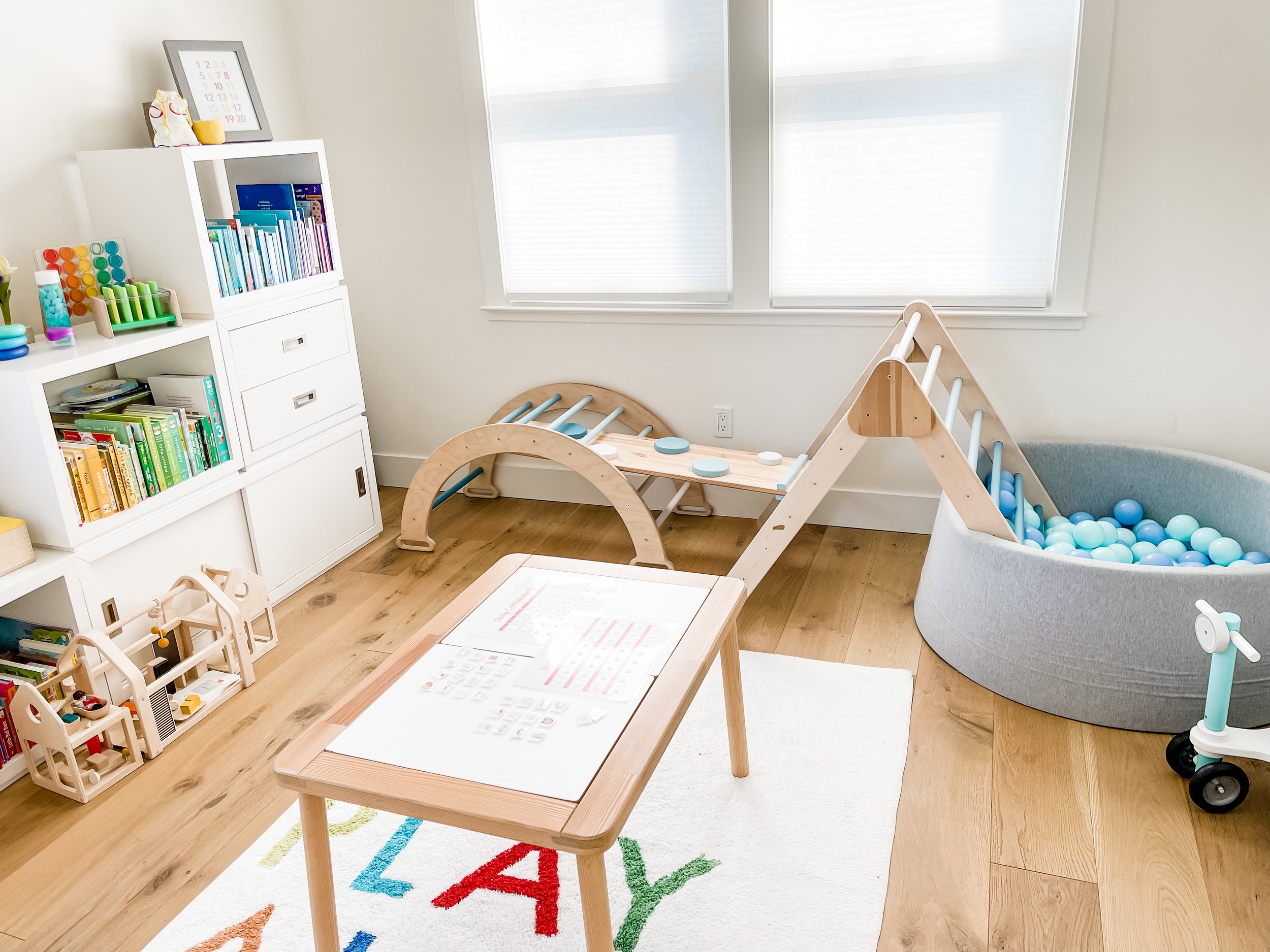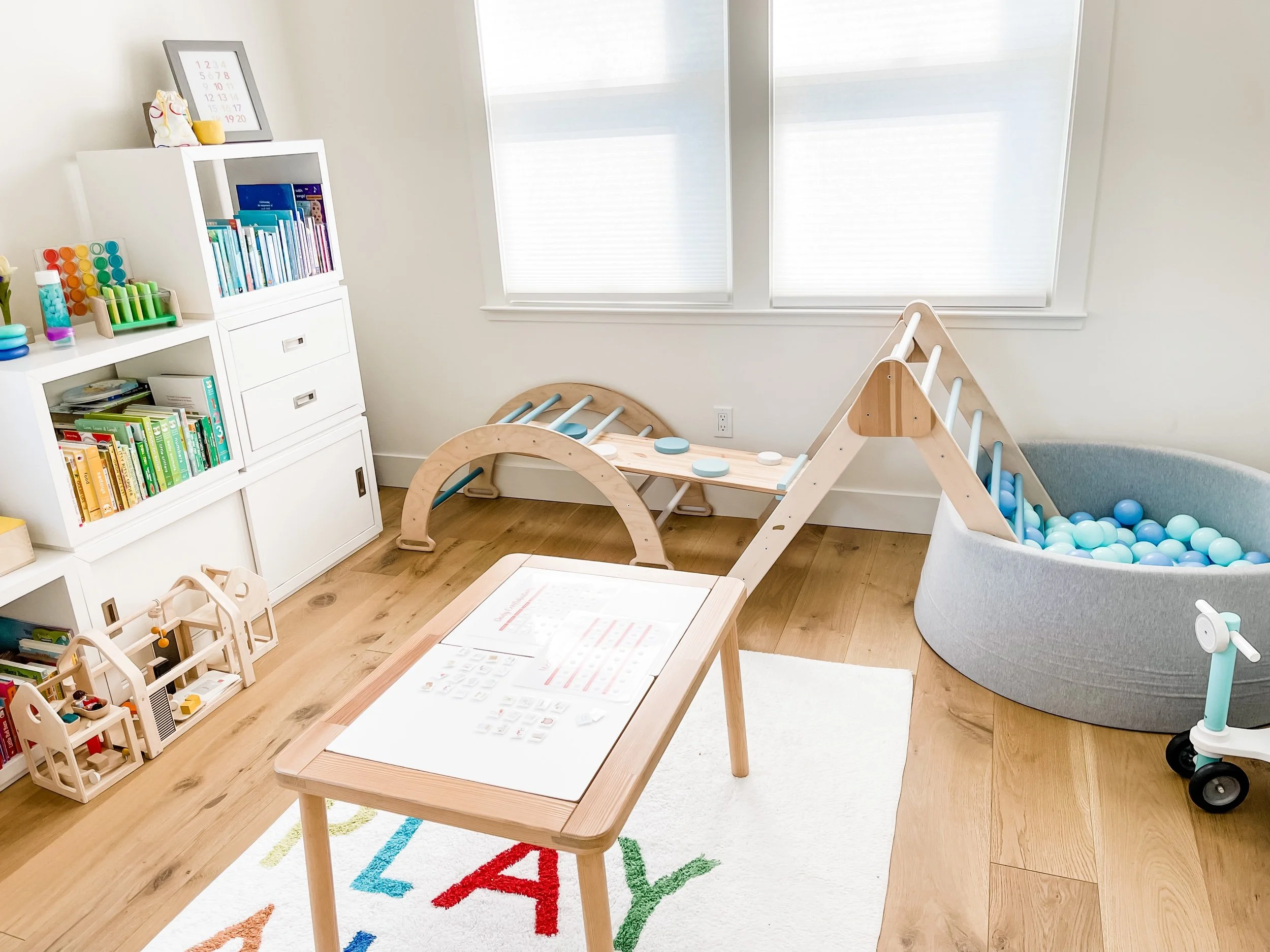So here we are in the midst of toddlerhood with our two-year old Sofia and I gotta say, it’s rough. You always hear about the terrible twos, but wow I had no idea. Despite her charming personality and non-stop chatter, everything is a battle with her. Putting on clothes, brushing her teeth, going down for a nap, eating breakfast, and especially the dreaded getting into the car seat. And we’ve tried absolutely everything from being calm and patient, bribing her with treats, toys, and rewards. Nothing seems to work and it’s so frustrating! Until finally we found the Positive Parenting Methodology and so far, we’ve been practicing all of the behaviors and tools to get us on the right track and reduce the frustration.
Today, I wanted to share the Family Contributions method as a replacement for “Chores”. Luckily, Sofie is already excited about helping out around the house and she recently got the Lovevery Sink so she’s been obsessed with washing dishes (anything water or pouring related really). But as we learned in the course, we really need to make it an official part of her contributing to the family. We learned that a lot of the popular chore and rewards systems work in the short term but don’t produce good long term behaviors.
External rewards may provide a quick fix, but it’s only internal motivation that’s sustainable.
We had been in subtle ways using little rewards to keep Sofie motivated rather than instilling in her intrinsic value system. If kids learn to only do chores in order to get a reward, then they’ll never be motivated to do them without the reward. And similarly, if chores are used a punishment, kids will only dislike them more. Instead, we want kids to be motivated internally to contribute to the family. The positive parenting program also recommends using allowance as a reward for doing chores. “By linking money to the completion of chores, parents turn an allowance into an ‘if-then’ reward. This sends kids a clear message: in the absence of a payment, no self-respecting child would willingly set the table, empty the garbage, or make her own bed.” — Daniel Pink
How to make “Chores” a part of your toddler’s routine
Step 1:
Rename “Chores” as “Family Contributions” This helps set the right expectation — that everyone in the household is expected to contribute to the family and the household. You can help your toddler grasp this concept by creating a visible Family Contributions chart in a common area of the house. This will help your toddler see that everyone makes contributions to the family and the household to keep it running smoothly. You can download this Family Contributions kit for the Daily Contributions and Weekly Contributions posters.
Step 2:
Create a list of age appropriate jobs that your toddler could be doing if taught how. These would be tasks that they’re not already doing on a regular basis but would be capable of doing primarily independently. If you’re not sure where to get started, check out this list of chores by age group for some inspiration. You can also print out this page as mini task cards for your toddler to track their family contributions. It’s not a reward chart — there are no points or treats at the end, but seeing the chart visually will help your toddler feel accomplishment over their contributions to the family.
Step 3:
Create the checklist with your toddler. Once you have a list of the possible tasks, sit down with your toddler and create the checklist together. Your toddler will appreciate being involved in the process of planning and creating his or her own family contributions routine. I started with 3 weekly contributions that she could make so that we could nail those before adding more. But this toolkit includes Daily & Weekly routine planners and chore cards so that you can choose a plan that fits your family’s needs.
Step 4:
Train your toddler how to do each task by walking them through it step by step. It takes time at first (and lots of patience), but once they get the hang of it, you’ll be so glad you did! I started with the tasks that Sofie had helped us with before but didn’t do on a regular basis so that the training would be a bit easier and she could feel great about her accomplishment right away. You can also start with the tasks you know your toddler will get excited about — for example, Sofie has been so excited about the new leaf blower that we got for Christmas (and is generally excited about all types of machinery) so training on “Gardening” was an easy win.
Step 5:
Create When-Then routines to help your toddler understand that sometimes we need to make sure the household is running smoothly before we can get to the fun. For example, “When you’ve done all of your family contributions, then you can go to the park to play.”
Step 6:
Provide encouragement for a job-well done. When your toddler has made their family contributions, focus on the outcome and encourage hard work. Instead of giving praise like “you’re a good girl,” positive parenting focuses on encouragement, which reenforces a growth mindset. Try these phrases for offering encouragement:
“We all get to enjoy a clean and tidy house when the toys are picked up".
“When we have clean clothes to wear, we can feel good about how we look.”
“You must be so proud of making such an important contribution to the family.”
FULL LIST OF CONTRIBUTIONS BY AGE GROUP
4 to 6 YEARS OLD
• Wake up with an alarm clock
• Find grocery items
• Sort lights & darks
• Wipe down bathroom
• Water plants
• Make the bed
• Help vacuuming floors
• Help dusting furniture
• Empty the dishwasher
• Measure ingredients
• Plan meals
• Bathe the pets
• Help with gardening
18 MONTHS TO 3 YEARS
• Turn off the lights
• Bring in the newspaper
• Bring in the mail
• Pick up toys and clothes
• Put soiled diaper in diaper pail
• Wash vegetables & produce
• Set the table
• Clean up the table
• Feed the pets
• Put groceries away
• Fold laundry
• Wash laundry
• Dry laundry
• Clean the dishes
• Dry the dishes
Looking for even more resources?
Check out this awesome Routines Checklist for toddlers. Implementing basic morning, daily, and evening routines was a game changer in my house and I can’t wait to see if it helps you too!
Did you know that creating routines can really help you evade the “terrible twos”?! Learn more about the Toddler Tango in this article.







































